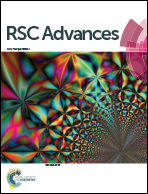The phase, morphology and surface characterization of Ti–Mo alloy films prepared by magnetron sputtering
Abstract
Magnetron sputtering is a physical vapor deposition process which allows the formation of metastable materials because of the particle bombardment process. Ti–Mo alloys are typical biomedical β-Ti alloys because of the remarkable β-stabilizing effect and the favorable safety of the Mo element. In this paper, Ti–15 wt% Mo and Ti–30 wt% Mo alloy films prepared by magnetron sputtering are studied. The substrate temperatures are 50 °C, 100 °C, 200 °C and 300 °C, respectively, which are far below the β-transus temperatures of Ti–Mo alloys. The two films both show metastable β-Ti growth at 50 °C and 100 °C, but have different phase evolutions as the substrate temperature further rises. The diversity is attributed to the different stabilities of metastable β growth in the two films. The different morphology evolutions with the increasing substrate temperature between the two films are discussed. The natural surface oxidation layers of the two films are analyzed by XPS.



 Please wait while we load your content...
Please wait while we load your content...